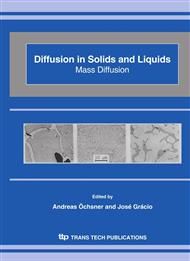p.378
p.384
p.390
p.397
p.403
p.409
p.415
p.421
p.427
Three-Group Albedo Method Applied to the Diffusion Phenomenon with Up-Scattering of Neutrons
Abstract:
The main objective of this research is to develop a three-group neutron Albedo algorithm considering the up-scattering of neutrons in order to analyze the diffusion phenomenon in nonmultiplying media. The neutron Albedo method is an analytical method that does not try to solve explicit describing equations for the neutron fluxes [1,2]. Thus the neutron Albedo methodology is very different from the conventional methodology, as the neutron diffusion theory model. Graphite is analyzed as a model case. One major application is in the determination of the nonleakage probabilities with more understandable results in physical terms than conventional radiation transport method calculations.
Info:
Periodical:
Pages:
403-408
Citation:
Online since:
October 2006
Keywords:
Price:
Сopyright:
© 2006 Trans Tech Publications Ltd. All Rights Reserved
Share:
Citation:


